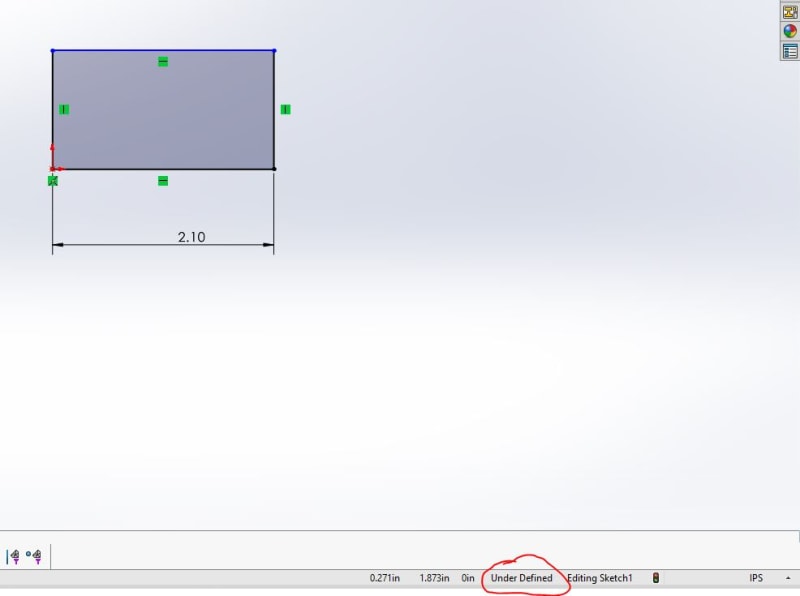I'm needing to learn creo and could use some help. 10 yrs of experience in multiple other programs NX, SW, Fusion. Thanks in advance for the help.
The parameters have me slightly baffled. It is greyed out when you are in a sketch. Yet you can go into relations and make a parameter, weird.
I guess you have two choices...
1) you make your parameters prior to the sketch which I'm not a fan of it I'm designing a new part or product. I may want to enter a dimension in and see how it works then make it a parameter later.
2) In the sketch you click the relations icon and make a parameter, then you must exit out of the relations to apply it to a line length.
I think in all the CAD programs I've used when you start typing in a parameter name in the dimension field next to a line it populates with all the names you began the letters with. I don't see this happening in Creo. If I have bottom_width and top_width as parameters I always just type in width and both populate on the dropdown. Without this I see I might have to go into relations to remember the parameter name.
I'm I reading the program right or is there an easier way, specially to get the auto populate dropdown of names if you have a lengthy list of parameters?
If I sketch two rectangles in one sketch, do you have the ability to only extrude one of the rectangles? I'm also curious if you can extrude a single leg of a rectangle as a sheet body. In solidworks for instance you have to project(convert entities) the single leg into a new sketch in order to extrude one line from a previous sketch. From my initial test drive, it appears you can't single out a rectangle for solid extrude nor can you single out a leg for a surface extrude. Just trying to confirm what I'm seeing on how flexible creo is with extruding single entities from an intricate base sketch.
If I have two rectangles extruded from two differing sketches, how do I hide one of the solid bodies?
How do you know if a sketch is fully constrained?
Thanks for help, I've got a few more questions, but this is plenty for now.
The parameters have me slightly baffled. It is greyed out when you are in a sketch. Yet you can go into relations and make a parameter, weird.
I guess you have two choices...
1) you make your parameters prior to the sketch which I'm not a fan of it I'm designing a new part or product. I may want to enter a dimension in and see how it works then make it a parameter later.
2) In the sketch you click the relations icon and make a parameter, then you must exit out of the relations to apply it to a line length.
I think in all the CAD programs I've used when you start typing in a parameter name in the dimension field next to a line it populates with all the names you began the letters with. I don't see this happening in Creo. If I have bottom_width and top_width as parameters I always just type in width and both populate on the dropdown. Without this I see I might have to go into relations to remember the parameter name.
I'm I reading the program right or is there an easier way, specially to get the auto populate dropdown of names if you have a lengthy list of parameters?
If I sketch two rectangles in one sketch, do you have the ability to only extrude one of the rectangles? I'm also curious if you can extrude a single leg of a rectangle as a sheet body. In solidworks for instance you have to project(convert entities) the single leg into a new sketch in order to extrude one line from a previous sketch. From my initial test drive, it appears you can't single out a rectangle for solid extrude nor can you single out a leg for a surface extrude. Just trying to confirm what I'm seeing on how flexible creo is with extruding single entities from an intricate base sketch.
If I have two rectangles extruded from two differing sketches, how do I hide one of the solid bodies?
How do you know if a sketch is fully constrained?
Thanks for help, I've got a few more questions, but this is plenty for now.


